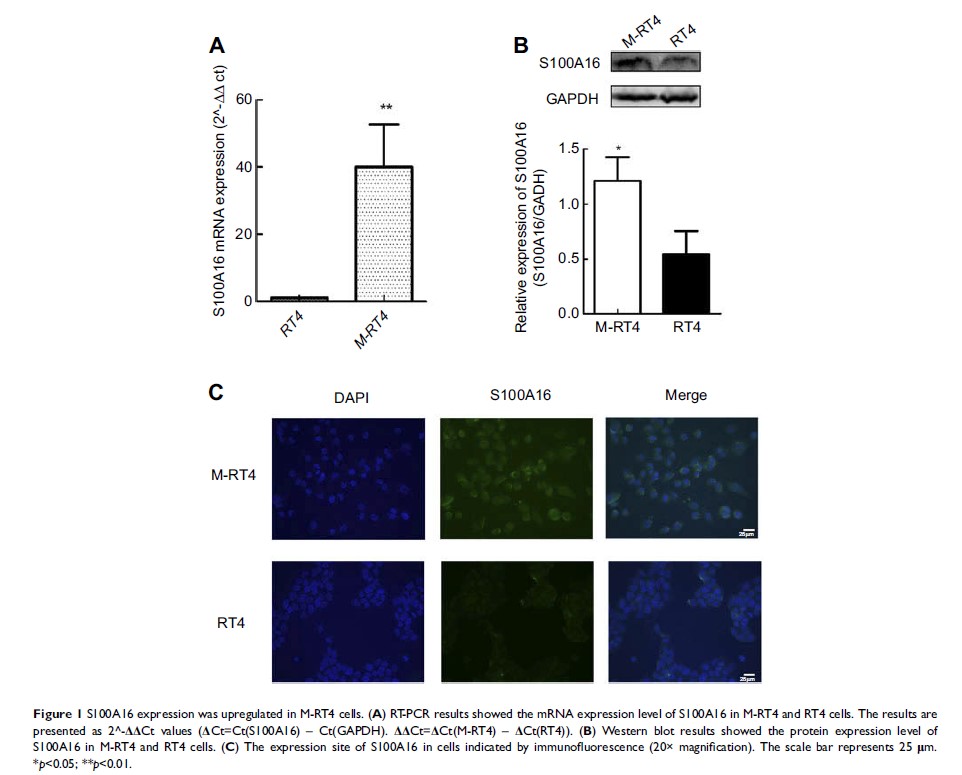9 8 1 2 5
论文已发表
注册即可获取德孚的最新动态
IF 收录期刊
- 3.3 Breast Cancer (Dove Med Press)
- 3.4 Clin Epidemiol
- 2.5 Cancer Manag Res
- 2.9 Infect Drug Resist
- 3.5 Clin Interv Aging
- 4.7 Drug Des Dev Ther
- 2.7 Int J Chronic Obstr
- 6.6 Int J Nanomed
- 2.5 Int J Women's Health
- 2.5 Neuropsych Dis Treat
- 2.7 OncoTargets Ther
- 2.0 Patient Prefer Adher
- 2.3 Ther Clin Risk Manag
- 2.5 J Pain Res
- 2.8 Diabet Metab Synd Ob
- 2.8 Psychol Res Behav Ma
- 3.0 Nat Sci Sleep
- 1.8 Pharmgenomics Pers Med
- 2.7 Risk Manag Healthc Policy
- 4.2 J Inflamm Res
- 2.1 Int J Gen Med
- 4.2 J Hepatocell Carcinoma
- 3.7 J Asthma Allergy
- 1.9 Clin Cosmet Investig Dermatol
- 2.7 J Multidiscip Healthc

Snail 调控的 S100A16 通过 AKT/Bcl-2 途径促进非肌肉浸润性膀胱癌的化疗耐药性
Authors Wang C, Zhu X, Li A, Yang S, Qiao R, Zhang J
Received 29 November 2018
Accepted for publication 27 February 2019
Published 27 March 2019 Volume 2019:11 Pages 2449—2456
DOI https://doi.org/10.2147/CMAR.S196450
Checked for plagiarism Yes
Review by Single-blind
Peer reviewers approved by Dr Andrew Yee
Peer reviewer comments 2
Editor who approved publication: Dr Antonella D'Anneo
Objective: To fully
investigate the effect of S100 proteins on the chemoresistance of nonmuscle
invasive bladder cancer (NMIBC).
Materials and methods: The
mitomycin C-resistant bladder cancer cell line M-RT4 was established and liquid
chromatography-tandem mass spectrometry was performed for proteomics analysis.
RT-PCR and Western blot were then performed to confirm the findings. To
investigate the mechanisms, S100A16 was knocked down by siRNA. Then, the
sensitivity of M-RT4 to mitomycin C was analyzed by a cell counting kit-8
(CCK8) assay, and the molecular expression including epithelial-mesenchymal
transition (EMT)-related and apoptosis-related markers were also examined by
Western blot. Based on the cancer genome atlas (TCGA) data, the prognostic
value of S100A16 was also investigated.
Results: There
were six S100 proteins with differential expression, among which S100A16 was
confirmed to be the only upregulated protein in M-RT4 cells. The expression of
S100A16 was regulated by the EMT-related transcription factor Snail. Knockdown
of S100A16 suppressed the AKT/Bcl-2 pathway to promote apoptosis, greatly
sensitizing M-RT4 cells to mitomycin C. The expression of S100A16 was
negatively correlated with the overall survival of bladder cancer patients.
Conclusion: S100A16
contributes to the chemoresistance of NMIBC by promoting the AKT/Bcl-2-mediated
anti-apoptosis effect and could be a potential prognostic marker and
therapeutic target for NMIBC patients.
Keywords: nonmuscle
invasive bladder cancer, chemoresistance, S100A16, apoptosis, Snail
